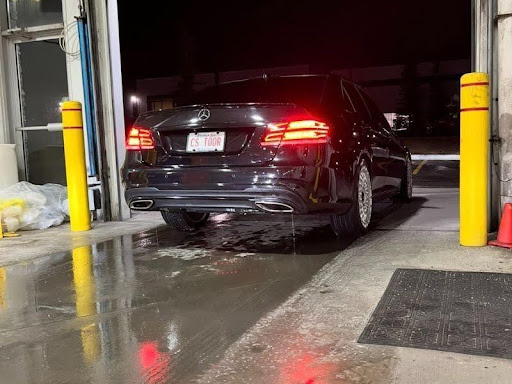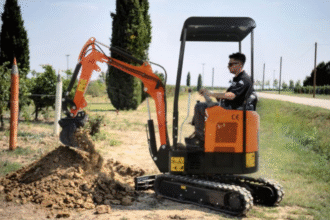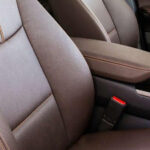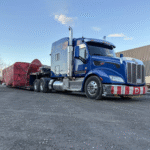You look at your car, and it just doesn’t have that pop anymore. That deep, wet shine it had when you first got it is long gone, replaced by a film of road grime and water spots. You want to bring back that new-car feeling, and these professional “car wash near you” tips are exactly what you need to do it right. It is more than just soap and water; it’s a process of proper car care that protects your investment and makes you proud to drive it. These are the kinds of expert tips the pros use every day.
Start With the Right Tools (and Toss the Wrong Ones)
You can’t achieve a great wash without the right equipment. The foundation of a perfect car washing experience starts with what’s in your hands. This is about working smarter, not harder, to protect your vehicle’s paint job.
Forget that old yellow sponge and any bottle of dish soap or hand soap. A sponge traps grit and dirt, dragging it across your car body and creating tiny scratches called swirl marks. A dish-washing detergent is formulated to strip tough grease from plates, and it will strip the wax and sealants right off your car’s clear coat, leaving the paint unprotected.
Instead, invest in a few high-quality microfiber wash mitts and a pH-neutral car wash soap. A proper car wash detergent cleans effectively, but it is a mild soap that is gentle on your paint and existing protection. While you may look for car deals on supplies, it is better to pay the regular price for quality products than a sale price for items that could damage your paint, leading to costly car repairs. Once your online cart sells and your supplies arrive, you’re ready to begin.
The Pre-Wash Is Non-Negotiable
Think about all the dirt, dust, and grime that collects on your car, especially after driving around Calgary. Professionals never start scrubbing a dry, dirty car. They always begin with a pre-wash stage to remove the big stuff safely, which helps prevent scratches during the contact wash.
This is a simple but critical step in washing car panels safely. Use a hose or pressure washer to thoroughly rinse the entire vehicle, starting from the top and working your way down. The goal is to let the water do the heavy lifting, flushing away as much loose dirt, pollen, and debris as possible before you ever touch the paint with a wash mitt.
For extra stubborn grime like bird droppings or that winter road salt film, a pre-wash foam can be a great help. You can use a foam cannon that attaches to a pressure washer. This foam clings to the surface and lifts dirt, making the contact wash much safer for your paint and making your car work easier.
Mastering the Two-Bucket Wash Method
This method is a game-changer for preventing scratches during your car washing routine. It’s a simple concept that drastically reduces the risk of grinding dirt back into your paint. Almost every professional in car detailing lives by this technique for a great wash.
You need two distinct buckets. One water bucket is for your soapy water solution, and the second, a rinse bucket, is just for clean water. This smart system keeps your clean soap from becoming contaminated with all the grit you’re removing from the car.
Here’s how it works:
- Fill one bucket with your car wash soap and water mixture. This is your “Soap Bucket.”
- Fill the second bucket with plain, clean water. This is your “Rinse Bucket.”
- Place a Grit Guard at the bottom of each bucket if you have them. These inserts help trap dirt at the bottom, away from your car wash mitt.
- Dunk your clean wash mitt into the Soap Bucket and wash a small section of your car.
- Before getting more soap, dip and swirl your now-dirty mitt in the Rinse Bucket. This releases all the collected grit into the rinse water.
- Now you can safely go back to your Soap Bucket for fresh suds and move to the next section of the car body.
Repeating this process ensures you’re always using a relatively clean mitt on the paint. Many auto enthusiasts swear by this as the safest way to wash by hand. For ultimate safety, some even use a third bucket exclusively for the extremely dirty car wheels.
Professional Car Wash Tips for Wheels and Tires First
You should always tackle your wheels and tires before washing the car’s body. Your car wheels are usually the dirtiest part of the car. They are covered in abrasive brake dust, road tar, and heavy grime from the road.
If you wash your paint first, you risk splashing all that nasty gunk from the wheel wells onto your freshly cleaned panels. Washing the wheels first isolates the mess. Use a separate wheel brush, scrubbing brush, and even a dedicated water bucket for the wheels and tire care.
A good wheel cleaner made for your type of wheel will dissolve the baked-on brake dust. This makes the job easier and more effective, but be sure to rinse it thoroughly and never let it dry on the surface. For the tires, use a stiff scrubbing brush and a strong degreaser to remove old dressings and road grime for a deep clean.
Washing From the Top Down
Once the wheels are clean, it’s time for the car body. The golden rule is to work from the top of the vehicle down to the bottom. This is all about using gravity to your advantage as you start applying the soapy water.
Dirt and suds naturally flow downwards. By starting at the roof and moving to the hood, trunk, and then the sides, you are not re-contaminating areas you’ve already cleaned. The lower parts of the car are usually the dirtiest, so it makes sense to save them for last.
Wash in small sections, like the roof or a single door, using long sweeping motions instead of circular motions to minimize the appearance of any potential swirl marks. Then rinse each panel before the car wash soap has a chance to dry on the surface. This is especially important when washing in direct sunlight or on a warm day, as dried soap can leave stubborn spots and streaks.
Beyond the Wash: Clay Bars and Decontamination
Ever washed your car, and the paint still feels slightly rough to the touch? Those are bonded contaminants that a normal car wash won’t remove. This is where you can achieve car detailing results that truly look professional and enhance your paint job.
Things like industrial fallout, tree sap, and road tar can stick to your paint. A detailing clay bar is the tool for this job. After washing and drying your car, you glide a piece of detailing clay over the paint using a clay lubricant spray, which helps you see what a deep clean can do.
There is also chemical decontamination for a more thorough cleaning. Tiny iron particles from brake dust can embed in your paint and rust, and a dedicated iron remover product dissolves these particles. You can also use a tar remover for stubborn asphalt spots on lower panels, which is one of the more advanced detailing tips.
The Art of Drying Without Scratches
How you towel dry your car is just as important as how you wash it. The wrong drying method can instantly ruin all your hard work by adding new scratches and swirls. Never use an old bath towel or a rough, old mitt chamois; it is important to steer clear of these items.
The best tool is a large, soft, high-quality microfiber towel. Instead of dragging the towel across the paint, use a blotting or patting motion to safely remove water. Lay the microfiber towel over a section, pat it dry, then lift it and move to the next section to prevent leaving water spots.
Another pro technique is to use a leaf blower or a dedicated car dryer. This allows you to blow the water off the surface without touching the paint at all. It is perfect for getting water out of panel gaps, mirror housings, and grilles where it would normally drip out later, preventing streaks from leaving water on the surface.
Protection is Everything: Wax, Sealants, and Coatings
Washing your car is cleaning it. Adding protection is what keeps it looking good and makes future car washes easier. You’ve gone to all this effort to get the paint perfectly clean; now you have to protect it from the elements with some proper car maintenance.
In a place like Calgary, your car requires protection from everything. You get intense UV rays in the summer and harsh salt and road grime in the winter. A layer of protection acts as a barrier against all of it and is a core part of long-term car care.
There are three main categories of protection you can apply:
- Wax: Usually made from carnauba, wax gives a warm, deep glow to the paint. It offers good protection, but it typically doesn’t last very long, maybe a few weeks to a couple of months.
- Sealant: These are fully synthetic products. Sealants offer longer-lasting protection than traditional waxes, often for four to six months. They are very durable and provide great defense against environmental contaminants.
- Ceramic Coating: This is the top tier of paint protection. A ceramic coating is a liquid polymer that creates a hard, chemical-resistant layer on your paint that can last for years.
Here’s a quick comparison to help you decide what might be best for you.
| Protection Type | Durability | Appearance | Ease of Use |
|---|---|---|---|
| Carnauba Wax | Low (1-3 Months) | Warm, Natural Glow | Easy |
| Paint Sealant | Medium (4-6 Months) | Slick, Synthetic Shine | Easy to Moderate |
| Ceramic Coating | High (2+ Years) | Hard, Glassy Gloss | Difficult |
When you apply wax or a sealant, you are locking in that shine and protecting your hard work. Following the product instructions for application and removal is crucial for the best results. You’ll notice that water beads up and rolls off beautifully after an application, making the next wash much easier.
Don’t Forget the Interior
A truly professional job means the inside looks just as good as the outside. A clean interior car makes driving a much more pleasant experience. Proper interior detailing doesn’t require a huge arsenal of products to make a big difference.
Start your interior cleaning with a thorough vacuuming. Use crevice tools to get into all the tight spots between and under the seats. For plastics and vinyl, use a dedicated interior cleaner with a microfiber cloth; it will clean without leaving a greasy, dust-attracting finish like some cheap protectants do.
For glass, use an ammonia-free glass cleaner and two clean microfiber towels. Use one towel to apply the cleaner and a second, dry towel to buff it for a streak-free finish. Doing your windows this way is a small detail that has a massive impact on visibility and the overall feel of cleanliness, showing you clean like a car pro.
Conclusion
That feeling of stepping back and seeing your car gleam is completely achievable at home. It just takes a bit more time and the right approach to your car work. By changing a few habits and using better techniques, you can avoid common mistakes that dull your paint over time, like using a drive-thru car wash with harsh brushes.
These professional car wash Calgary tips are more than just a list of steps. They represent a better approach to car maintenance that helps prevent damage and preserves your vehicle. Using these methods means you are not just cleaning your car; you are caring for it and preserving its value and beauty for years to come.

















